Trivia Browser
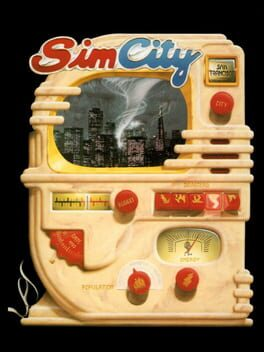
▲
2
▼
 In the original release of the game, the monster that the player could summon to attack the city was a thinly veiled parody of Godzilla, right down to using the character's iconic roar from the film series; the sound effect is even named "God" in the game's files, furthering the reference. The Godzilla parody is also depicted on the game's box art, gleefully waving at the viewer.
In the original release of the game, the monster that the player could summon to attack the city was a thinly veiled parody of Godzilla, right down to using the character's iconic roar from the film series; the sound effect is even named "God" in the game's files, furthering the reference. The Godzilla parody is also depicted on the game's box art, gleefully waving at the viewer.According to programmer Don Hopkins, who notably ported SimCity to numerous versions of Unix, Maxis ended up getting sued by Toho, the owners of the Godzilla franchise; additional details were recounted to him by Maxis CEO Jeff Braun:
"We never referred to the name Godzilla, our monster on the box cover was a T-Rex looking character, but... a few magazine reviews called the monster, Godzilla. That was all it took. Toho called it "confusion in the marketplace". We paid $50k for Godzilla to go away. In all honesty, Toho liked Maxis, they said $50k was the minimum they take for Godzilla infringement."
As a result of this suit, the monster was redesigned in the v1.2 release to resemble a giant orange salamander. The creature's roar is also changed and the game's box art is redesigned to replace the Godzilla parody with a tornado. In the v1.3 release, the salamander is given a slightly larger and more detailed sprite to fit the revised art style, but its roar (now internally renamed "Monster") is corrupted.
The Cutting Room Floor article:
https://tcrf.net/SimCity_(Mac_OS_Classic)#Godzilla_vs._Notzilla
Don Hopkins testimony in a Hacker News post:
https://news.ycombinator.com/item?id=40050799
MobyGames gallery showcasing the different box art designs:
https://www.mobygames.com/game/848/simcity/covers/
https://tcrf.net/SimCity_(Mac_OS_Classic)#Godzilla_vs._Notzilla
Don Hopkins testimony in a Hacker News post:
https://news.ycombinator.com/item?id=40050799
MobyGames gallery showcasing the different box art designs:
https://www.mobygames.com/game/848/simcity/covers/

subdirectory_arrow_right Mario (Franchise)
▲
2
▼
 While Mario's mustache, red shirt and blue overalls were described by Miyamoto as the result of technical limitations, there's a possibility that they were also inspired by an issue of the Japanese men's fashion magazine Popeye, named after the fictional character that Mario was already partly inspired by. The March 1980 issue of Popeye magazine features cover art of a man with a mustache wearing a red shirt with blue overalls.
While Mario's mustache, red shirt and blue overalls were described by Miyamoto as the result of technical limitations, there's a possibility that they were also inspired by an issue of the Japanese men's fashion magazine Popeye, named after the fictional character that Mario was already partly inspired by. The March 1980 issue of Popeye magazine features cover art of a man with a mustache wearing a red shirt with blue overalls.

▲
1
▼
In an interview with the game's composer Yuzo Koshiro published in the Japanese book series Game Maestro in 2001, he clarified that while there were dozens of people on the game's music staff, there were only four main composers actually writing and arranging the music, making them the smallest group within the project (this also included people working on sound effects and voice acting). The main theme of the game was written by composer Mitsuyoshi Takenobu. Koshiro believed Takenobu had "the hardest time of us all" during development as he also helped fine-tune the game's music in line with the programmers and director's requests. Koshiro also mentioned that at the beginning of the project, the offer made to get him on the project was that Takenobu would write songs, and Koshiro would orchestrate and arrange them. However, as the project went on, they both went on the opposite direction.
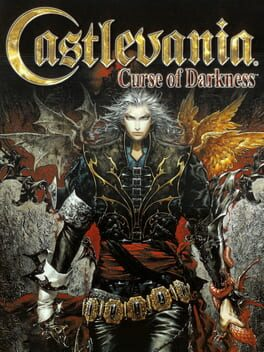
▲
2
▼
In a 2005 interview with the game's producer Koji Igarashi published in the official Konami strategy guide, he explained the decision to change the series' title in the domestic Japanese market from "Castlevania" back to "Akumajo Dracula".
The title change to Castlevania in Japan initially occurred because the Akumajo Dracula games enjoyed a larger market share in Europe and America compared to Japan. Consequently, more reports and information about the games were available in those regions, and they were released there first. In the recent past, news from outside Japan was harder to access, but with the advent of the internet, Japanese users could now easily stay informed. However, there was a concern that Japanese players might not immediately recognize the equivalence between Castlevania and Akumajo Dracula, so the main title of the previous game Lament of Innocence was changed to Castlevania in Japan to address this.
Subsequently, for Curse of Darkness, the decision was made to revert to the original title because the team felt that the Castlevania name had become associated with trilogies, inadvertently making it challenging for fans to find information about the Akumajo Dracula titles. The team wanted to ensure clarity for Japanese fans and clear up any confusion among Akumajo Dracula fans about if Castlevania was supposed to be Akumajo Dracula.
The title change to Castlevania in Japan initially occurred because the Akumajo Dracula games enjoyed a larger market share in Europe and America compared to Japan. Consequently, more reports and information about the games were available in those regions, and they were released there first. In the recent past, news from outside Japan was harder to access, but with the advent of the internet, Japanese users could now easily stay informed. However, there was a concern that Japanese players might not immediately recognize the equivalence between Castlevania and Akumajo Dracula, so the main title of the previous game Lament of Innocence was changed to Castlevania in Japan to address this.
Subsequently, for Curse of Darkness, the decision was made to revert to the original title because the team felt that the Castlevania name had become associated with trilogies, inadvertently making it challenging for fans to find information about the Akumajo Dracula titles. The team wanted to ensure clarity for Japanese fans and clear up any confusion among Akumajo Dracula fans about if Castlevania was supposed to be Akumajo Dracula.

▲
1
▼
According to a 2005 interview with the game's producer Koji Igarashi published in the official Konami strategy guide, he stated that the decision to set the game three years after the events of Castlevania III: Dracula's Curse was significantly driven by his love for the game. The introduction of the "Innocent Devil" system, where players have a demon servant fighting alongside them, prompted him to consider the game's placement within the Castlevania timeline. Given the demonic nature of the Innocent Devils, Igarashi decided the story should align closely with that theme.
The idea he came up with back then revolved around a hidden narrative during Ralph C. Belmont's battle against Dracula, where there existed someone who betrayed Dracula, and another individual who relentlessly pursued this traitor. Igarashi believed that despite these circumstances not being part of the officially recorded history in-universe, they still significantly impacted Dracula’s defeat, and in that sense the gameplay system came first and the story was woven around it,
The idea he came up with back then revolved around a hidden narrative during Ralph C. Belmont's battle against Dracula, where there existed someone who betrayed Dracula, and another individual who relentlessly pursued this traitor. Igarashi believed that despite these circumstances not being part of the officially recorded history in-universe, they still significantly impacted Dracula’s defeat, and in that sense the gameplay system came first and the story was woven around it,

▲
3
▼
Dan Arey, a former Crystal Dynamics and Naughty Dog developer who worked on the second and third games in the series, praised the first game in a 1996 Retro Gamer magazine interview. Prior to joining Naughty Dog, he talked about how the game maintained its unique identity in the world of 3D platformers, even when faced with the groundbreaking influence of Super Mario 64. Arey emphasized that while Super Mario 64 embraced open-ended levels, programmer Andy Gavin and director Jason Rubin designed Crash Bandicoot to adhere to a more old-school, level-based structure while adding 3D depth to its platforming challenges by "going down 3D roads with occasional 2D side-wave elements, but everything was very focussed in terms of mechanics". Arey also expressed admiration for the game's technical achievements even before he joined Naughty Dog, which likely soon motivated him to do so:
"We saw some early demos when I was at Crystal Dynamics, and we were asking ourselves how they were getting so many polygons on the PlayStation. What they had done was pre-calculate the polygons you couldn't see from a fixed-camera viewpoint, so it looked like there were many more polygons being pushed on the system than ever before."

▲
2
▼
 Originally, the development team behind Star Fox 64 themselves actually tried to provide the voice lines for the characters:
Originally, the development team behind Star Fox 64 themselves actually tried to provide the voice lines for the characters: —Back in the day, a lot of Nintendo’s games used voices provided by the staff.
Imamura: We dubbed Star Fox 64 ourselves at first, too. We were all like, wow, this is gonna be so cool! But when we showed it to people outside the team, they responded with “laaaame” (laughs). We were told “this is unforgivably bad” (laughs), and so we switched to professional voice actors.
—Ahahaha! But, now I want to hear it for myself… (laughs)
Imamura: Rare did the same thing with their game, except they were really good at it (laughs)
The culture around voice acting isn’t cemented in the US to the extent that it is in Japan; in the US, voice acting is performed by regular actors, whereas in Japan, voice actors have a very specific and distinctive style of delivery, and it could be that it’s left such an impression on us that we’re not as capable of tolerating amateurish voice acting.
What’s funny is that some of the sales people who didn’t like our N64 dub told us that the Super Famicom “buh-buh-buh-buh” voices were cooler, so as a trial, we looked backwards and imported those SFC-style “buh-buh-buh”s, but the reaction was, “nah, that sucks” (laughs). We really did experiment with the animal language (laughs).
Imamura: We dubbed Star Fox 64 ourselves at first, too. We were all like, wow, this is gonna be so cool! But when we showed it to people outside the team, they responded with “laaaame” (laughs). We were told “this is unforgivably bad” (laughs), and so we switched to professional voice actors.
—Ahahaha! But, now I want to hear it for myself… (laughs)
Imamura: Rare did the same thing with their game, except they were really good at it (laughs)
The culture around voice acting isn’t cemented in the US to the extent that it is in Japan; in the US, voice acting is performed by regular actors, whereas in Japan, voice actors have a very specific and distinctive style of delivery, and it could be that it’s left such an impression on us that we’re not as capable of tolerating amateurish voice acting.
What’s funny is that some of the sales people who didn’t like our N64 dub told us that the Super Famicom “buh-buh-buh-buh” voices were cooler, so as a trial, we looked backwards and imported those SFC-style “buh-buh-buh”s, but the reaction was, “nah, that sucks” (laughs). We really did experiment with the animal language (laughs).
As mentioned by Takaya Imamura above, this was met with negative reception internally and thus they switched over to using professional voice actors. What remains of this lost developer dub was recently discovered within the Nintendo gigaleak from 2020.
The official Japanese Star Fox 64 guidebook reveals that it was programmer Nobuhiro Sumiyoshi who provided the original voice for Leon Powalski, who is voiced by Shinobu Satouchi (who also voices Fox McCloud) in the final Japanese version of Star Fox 64.
Star Fox 64 rejected developer dub discovery Reddit thread:
https://www.reddit.com/r/starfox/comments/10m7vj8/found_the_terrible_awesome_rejected_developer_dub/
Rejected developer dub:
https://youtu.be/bpsHjFBK164
2002 Nintendo Dream interview:
https://shmuplations.com/starfoxadventures/
User's English translation of official Japanese Star Fox 64 guidebook:
https://www.reddit.com/r/starfox/comments/y8cwc9/finally_got_around_to_doing_translations/
https://www.reddit.com/r/starfox/comments/10m7vj8/found_the_terrible_awesome_rejected_developer_dub/
Rejected developer dub:
https://youtu.be/bpsHjFBK164
2002 Nintendo Dream interview:
https://shmuplations.com/starfoxadventures/
User's English translation of official Japanese Star Fox 64 guidebook:
https://www.reddit.com/r/starfox/comments/y8cwc9/finally_got_around_to_doing_translations/
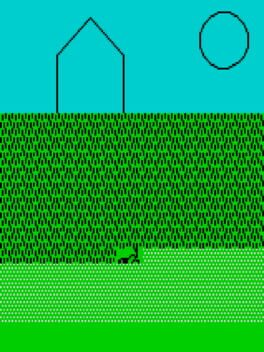
▲
1
▼
Advanced Lawnmower Simulator was originally just a joke game reviewed in an April Fools edition of Your Sinclair Magazine, which received a 9 out of 10 and teased several other humorously mundane hygiene-based games by "Gardensoft" such as a launderette game. Over time, this game would be mentioned more beyond the April issue, with fake letters in the Letters section detailing a humorous fictional story about the game being stolen, until it culminated with the game's release on a cover disc in Issue 45, released a year and a half after the game was first mentioned.
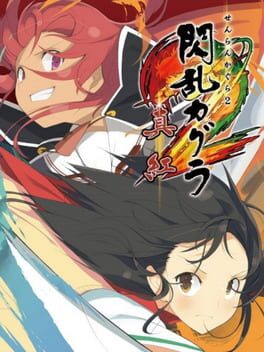
subdirectory_arrow_right Lord of Magna: Maiden Heaven (Game)
This trivia has been marked as "Not Safe for Work".
It may not be appropriate for all visitors and definitely isn't appropriate for work or school environments.
Click here to unhide it.
It may not be appropriate for all visitors and definitely isn't appropriate for work or school environments.
Click here to unhide it.
▲
1
▼
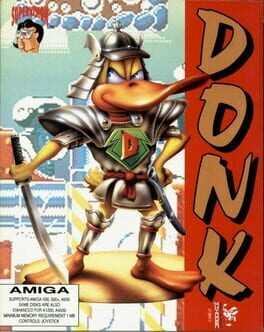
▲
1
▼
Donk!: The Samurai Duck was originally titled Dong. This name was used on cover disc demos prior to the official release before being changed.

▲
1
▼
When writing the story and setting of the first two The Legend of Zelda games, Takashi Tezuka was inspired by J. R. R. Tolkien’s "The Lord of the Rings" high fantasy book series.
Club Nintendo April 1996 Issue (Page 72):
https://archive.org/details/ClubNintendo1996German/page/n35/mode/1up
https://archive.org/details/ClubNintendo1996German/page/n35/mode/1up
Company: Atari
▲
2
▼
Founders Nolan Bushnell and Ted Dabney originally wanted to name Atari "Syzygy," only to learn that the name was already taken by a roofing company. Consequently, the pair decided to brainstorm new ideas while playing a round of Go, which Bushnell was experienced in; an issue of Atari's home computer magazine I/O stated that "Their best brainstorming always occurred over a good game and a bottle of beer."
Following this, Bushnell and Dabney decided to name the company after a piece of Go jargon, settling on "Atari," a term used to describe a playing piece that is surrounded on all but one side. "Sente" and "Hane" were also considered as possible names.
Following this, Bushnell and Dabney decided to name the company after a piece of Go jargon, settling on "Atari," a term used to describe a playing piece that is surrounded on all but one side. "Sente" and "Hane" were also considered as possible names.
Page about Atari's relation to Go:
https://web.archive.org/web/20220128094617/https://senseis.xmp.net/?AtariInc
Page detailing the definition of atari in Go:
https://web.archive.org/web/20220128094056/https://senseis.xmp.net/?Atari
https://web.archive.org/web/20220128094617/https://senseis.xmp.net/?AtariInc
Page detailing the definition of atari in Go:
https://web.archive.org/web/20220128094056/https://senseis.xmp.net/?Atari
Company: Nintendo
▲
3
▼
Nintendo's development philosophy is often described with the quote "a delayed game is eventually good, but a rushed game is forever bad," which is generally attributed to Shigeru Miyamoto. However, there is no evidence that he actually said the quote: a 2022 investigation by video game researcher Ethan Johnson revealed that it was first documented as "an industry catchphrase" in a November 1997 issue of Gamepro magazine. The quote was first tied to Nintendo in the June 1998 issue of Edge, in which an article about the protracted development of The Legend of Zelda: Ocarina of Time alleges that Nintendo saw it on a poster in a developer's office and took it to heart.
Over the next three years, the quote circulated among Usenet forum members when describing a variety of game developers, Nintendo included, and in 2003 it started being attributed to Miyamoto specifically. Johnson speculates that this came from people conflating it with comments Miyamoto made in a 2001 interview looking back on the making of Ocarina of Time, where he stated that "the entire staff starts to feel like 'if I let the game be released in this state, I will be ashamed.' Because if the development team doesn't end up feeling like craftsmen, artisans... then it won't be a good game." Johnson attributed the quote's longevity to the emergence of modern hype culture and growing public awareness about the significantly longer development periods needed for 3D games.
Over the next three years, the quote circulated among Usenet forum members when describing a variety of game developers, Nintendo included, and in 2003 it started being attributed to Miyamoto specifically. Johnson speculates that this came from people conflating it with comments Miyamoto made in a 2001 interview looking back on the making of Ocarina of Time, where he stated that "the entire staff starts to feel like 'if I let the game be released in this state, I will be ashamed.' Because if the development team doesn't end up feeling like craftsmen, artisans... then it won't be a good game." Johnson attributed the quote's longevity to the emergence of modern hype culture and growing public awareness about the significantly longer development periods needed for 3D games.
Article about Johnson's findings:
https://gamerant.com/miyamoto-famous-quote-delayed-games-good-misattributed/
Johnson's original Twitter thread, including a correction about his statement regarding the poster Nintendo allegedly saw:
https://twitter.com/GameResearch_E/status/1504850248107188234
https://gamerant.com/miyamoto-famous-quote-delayed-games-good-misattributed/
Johnson's original Twitter thread, including a correction about his statement regarding the poster Nintendo allegedly saw:
https://twitter.com/GameResearch_E/status/1504850248107188234

subdirectory_arrow_right Kingdom Hearts (Franchise)
▲
1
▼
In each Dive to the Heart segment in almost every game in the series, there is a disembodied voice that can only speak through text that guides the characters (and thus the player as well) through the tutorial of each game. The identity of these voices has been unidentified in every game but Kingdom Hearts: Birth by Sleep (where it is obviously child Sora) and the first Kingdom Hearts. For the latter, in the Kingdom Hearts Ultimania, Nomura was asked who the voice is for the opening of the first game and he finally gave it's identity as being none other than King Mickey. However, this interview was done in the early 2000's before most of the sequels were produced, so it's unknown if this explanation was retconned or not.
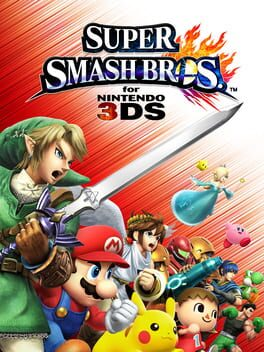
subdirectory_arrow_right Super Smash Bros. for Wii U (Game)
▲
2
▼
As an early April Fools' joke, the fan-run Facebook/Blogspot group Operation: Power Up made a fake Super Smash Bros. website character page based on the ones used in the official website to "reveal" Nester, the mascot of Nintendo Power magazine, as a playable character. While the page itself is notably accurate to the source material, the screenshots shown at the bottom are of very low quality: not only is Nester's model poorly made, he's only ever shown alone in the pics and is clearly pasted on in some of them.
April Fools joke:
https://web.archive.org/web/20140330214132/https://www.smashbros.us/us/characters/nester.html
Archived smashbros.us page linking to Operation: Power Up's Blogspot page:
https://web.archive.org/web/20160110171420/http://smashbros.us/
Article about the joke:
https://www.destructoid.com/site-tries-to-reveal-nester-for-smash-bros-nobody-falls-for-it/
https://web.archive.org/web/20140330214132/https://www.smashbros.us/us/characters/nester.html
Archived smashbros.us page linking to Operation: Power Up's Blogspot page:
https://web.archive.org/web/20160110171420/http://smashbros.us/
Article about the joke:
https://www.destructoid.com/site-tries-to-reveal-nester-for-smash-bros-nobody-falls-for-it/
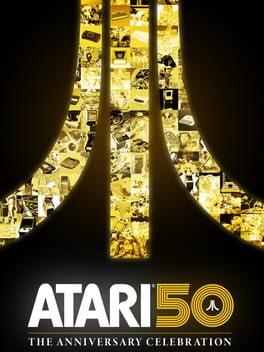
subdirectory_arrow_right SwordQuest: AirWorld (Game), Swordquest: Waterworld (Game), Swordquest: Fireworld (Game), Swordquest: Earthworld (Game), Swordquest (Collection)
▲
1
▼
 The SwordQuest series was a series of 4 games developed by Atari, each one having an associated contest to win a one-of-a-kind item from the game made of real gold by finding clues in the game and using them to uncover hidden messages in the attached comic book, then coming to Atari headquarters to compete in a contest version of the respective game. The advertised prizes were:
The SwordQuest series was a series of 4 games developed by Atari, each one having an associated contest to win a one-of-a-kind item from the game made of real gold by finding clues in the game and using them to uncover hidden messages in the attached comic book, then coming to Atari headquarters to compete in a contest version of the respective game. The advertised prizes were:•Talisman of Penultimate Truth, Earthworld's prize
•Chalice of Light, Fireworld's prize
•Crown of Life, Waterworld's prize
•The Philosopher's Stone, Airworld's prize
•The Sword of Ultimate Sorcery, the grand prize
Halfway through the series, the video game crash of 1983 hit, and it was put to a halt, leaving Airworld, the Philosopher's Stone, and the Sword of Ultimate Sorcery unreleased. The Chalice of Light is the only item known to still exist, with all others being believed to have been melted down at some point.
In Atari 50, a game based on Airworld would see release, though it was not based on the work done for the game back in the 1980s.
Platform: PlayStation 2
This trivia has been marked as "Not Safe for Work".
It may not be appropriate for all visitors and definitely isn't appropriate for work or school environments.
Click here to unhide it.
It may not be appropriate for all visitors and definitely isn't appropriate for work or school environments.
Click here to unhide it.
▲
1
▼

▲
1
▼
 According to an Electronic Gaming Monthly preview article, Cool Spot was originally a Reversi clone like Spot: The Video Game, titled Spot II - the graphics used in Cool Spot seem to have been reused from cutscenes in the cancelled game.
According to an Electronic Gaming Monthly preview article, Cool Spot was originally a Reversi clone like Spot: The Video Game, titled Spot II - the graphics used in Cool Spot seem to have been reused from cutscenes in the cancelled game.
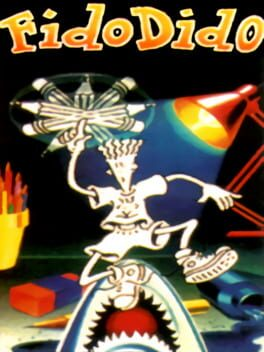
▲
1
▼
Fido Dido was listed as being "out now" in an issue of UK magazine SegaPro, despite the game not being released.
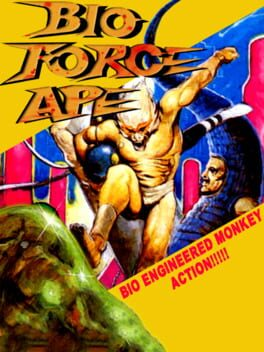
▲
2
▼
 Bio Force Ape is a game that was never released - it did, before it's cancellation, get a spotlight in Nintendo Power, creating a level of curiosity surrounding it within NES fan communities. Capitalizing off of this curiosity, a post would be made on the Digital Press forum in 2005 claiming to show screenshots of a leaked prototype. While the first post appeared legitimate, the hoax would eventually be unraveled starting with a screenshot of a glitched super move that was "so powerful [that] it messes up the game's graphics", which humorously made it appear that Bio Force Ape was unleashing a powerful fart attack, as a set of glitched graphics appeared next to a crouching animation. The poster, going under the username PaulB812, would refuse to dump the game and refer to anybody who asked for it to be released as either "communists" or "butter-slathered... hoarding fatties", before finally unveiling the prank with a game screenshot of a cutscene where a fat butter monster points out that the ape is "worth 2K monies[sic]", before the ape punches him while saying "EAT COMMUNISM!" A real prototype would be leaked in 2010.
Bio Force Ape is a game that was never released - it did, before it's cancellation, get a spotlight in Nintendo Power, creating a level of curiosity surrounding it within NES fan communities. Capitalizing off of this curiosity, a post would be made on the Digital Press forum in 2005 claiming to show screenshots of a leaked prototype. While the first post appeared legitimate, the hoax would eventually be unraveled starting with a screenshot of a glitched super move that was "so powerful [that] it messes up the game's graphics", which humorously made it appear that Bio Force Ape was unleashing a powerful fart attack, as a set of glitched graphics appeared next to a crouching animation. The poster, going under the username PaulB812, would refuse to dump the game and refer to anybody who asked for it to be released as either "communists" or "butter-slathered... hoarding fatties", before finally unveiling the prank with a game screenshot of a cutscene where a fat butter monster points out that the ape is "worth 2K monies[sic]", before the ape punches him while saying "EAT COMMUNISM!" A real prototype would be leaked in 2010.
The first page of the forum thread:
https://forum.digitpress.com/forum/showthread.php?71891-Bio-Force-Ape
The "powerful fart":
https://forum.digitpress.com/forum/showthread.php?71891-Bio-Force-Ape/page2
The "Eat Communism!" screenshot:
https://forum.digitpress.com/forum/showthread.php?71891-Bio-Force-Ape/page4
The real Bio Force Ape:
https://tcrf.net/Bio_Force_Ape
https://forum.digitpress.com/forum/showthread.php?71891-Bio-Force-Ape
The "powerful fart":
https://forum.digitpress.com/forum/showthread.php?71891-Bio-Force-Ape/page2
The "Eat Communism!" screenshot:
https://forum.digitpress.com/forum/showthread.php?71891-Bio-Force-Ape/page4
The real Bio Force Ape:
https://tcrf.net/Bio_Force_Ape
| keyboard_double_arrow_leftFirst keyboard_arrow_leftPrev | Page 1 of 2 | Nextkeyboard_arrow_right Lastkeyboard_double_arrow_right |